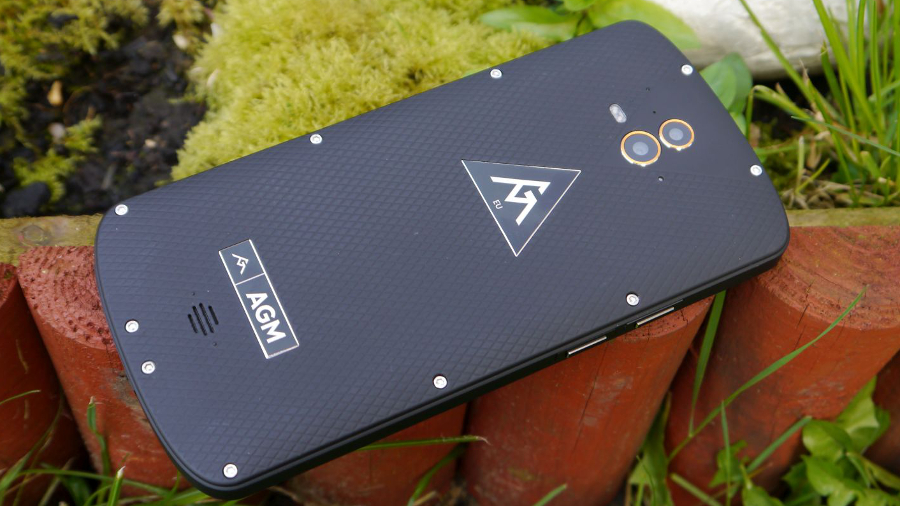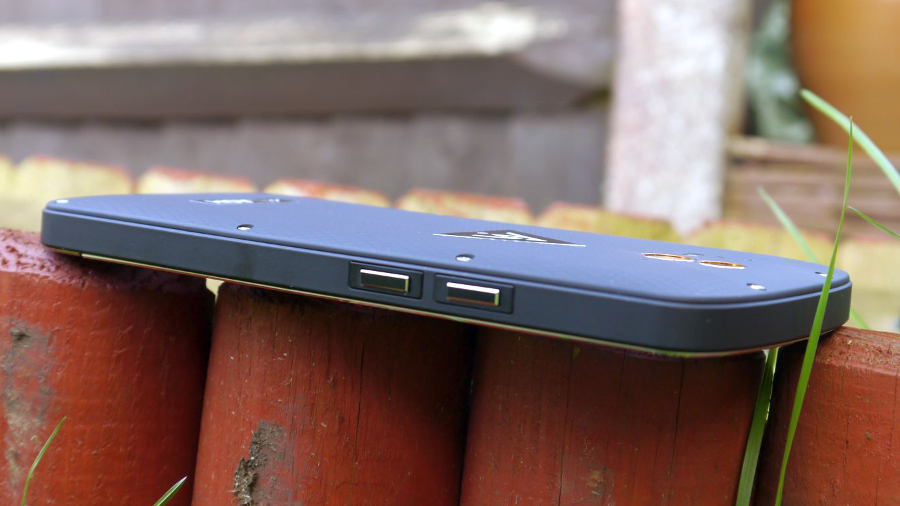Early Verdict
The AGM X1 looks and feels like a premium device but is let down, big time, by the use of Android 5.1.1. There’s plenty to appreciate when it comes to the choice of components, and the price is pitched just about right.
Pros
- +
Good value for money
- +
Great display
- +
NFC
Cons
- -
Outdated Android version
- -
No status lights
Why you can trust TechRadar
There’s something about the AGM X1 that sets it apart from the bevy of rugged smartphones that have emerged from mainland China in recent times.
It comes from one of the very few vendors that have focused exclusively on the growing global ruggedised smartphone market and the company – AGM, which stands for Actions Gain Memory – has made some smart choices that reflect its expertise.
The first one is the price: At around £210 (about $260, AU$340) at the time of writing, it is far more expensive than your average IP68-rated smartphone like the Nomu S30, the Ulefone Armor, the Homtom HT20 or the Blackview BV7000 Pro.
(The AGM X1 costs £212 from Gearbest in blue or black. Note that this price is exclusive of any taxes that might be levied by HMRC or courier companies on behalf of the vendor. Want to buy tech from online Chinese retailers? Read this first.)

But there’s a good reason why this is the case: AGM didn’t pull any punches when it comes to the X1’s hardware. For example, it opted for a Qualcomm system-on-a-chip, the Snapdragon 617, rather than the more affordable Mediatek alternatives.
Announced back in September 2015 and built on a 28nm process, the Qualcomm chip comprises of two clusters of four Cortex-A53 cores apiece, running at 1.5GHz (for the performance cluster) and 1.2GHz (for the power saving quartet). The graphics are handled by an Adreno 405 integrated GPU.
There’s also 4GB of RAM, 64GB on-board storage and the option to slot in a microSD card to boost the capacity by another 128GB. Note that you can run two SIMs and one microSD card simultaneously in this handset (which isn’t possible in some rugged rivals such as the aforementioned Blackview BV7000 Pro).
Sign up to the TechRadar Pro newsletter to get all the top news, opinion, features and guidance your business needs to succeed!
One of the many areas where the X1 justifies its heftier price tag is in the camera optics. AGM went for a dual 13-megapixel sensor setup – with an F/2.2 aperture, and a 5-piece wide-angle lens module – for the rear camera, and a 5-megapixel front-facing snapper.
The X1 is also one of the rare ruggedised smartphones with NFC connectivity – it’s just a shame that it doesn’t offer 802.11ac connectivity at this asking price. Speaking of connectivity, other than Bluetooth 4.0, the phone supports GPS, GLONASS and Beidou as well as all the main global bands (including the all-important B20 band).

The rest of the specification list carries the same feeling; in other words it’s better than your average smartphone. The display is a Samsung-sourced 5.5-inch Super AMOLED Full HD affair that produces a gorgeous image even in broad daylight.
The battery has a 5,400mAh capacity, one of the highest on the market, and while AGM’s claim of a three-day longevity with normal usage might be an exaggeration, Qualcomm’s quick charging feature can fill it to the 50% mark in just over an hour. That’s partly due to the multi-voltage 18W power adaptor (9V,2A or 12V,1.5A).
As for the phone’s design, there’s a silver metal rim that goes all the way round the handset. The X1’s main buttons (home, volume and camera) protrude, which is helpful if you wear gloves or want to locate them in the dark.
The home button, which is flanked by two capacitive Android buttons, also doubles as a fingerprint reader which is both fast (200ms activation time) and works even when your fingers are wet.

Rubber flaps cover the micro-USB port and the audio socket (both located on the bottom of the device) along with the microSD/SIM tray (located on the right of the X1).
While the 5.5-inch display dominates the front, the removable backplate plays host to an LED flashlight, 10 screws and a pair of camera sensors (along with a pair of AGM logos). Regarding the construction of this device, rubber seems to be the lead material, and that covers a titanium alloy frame.
The phone is remarkably light and portable despite the screen size. At 164 x 79 x 12mm and with a weight of 210g, it is too big for most rear pockets but bear in mind that it won’t need a case – or an extra battery – unlike most mainstream smartphones.
All in all, the X1 looks and feels more like a premium, high-end phone than a ruggedised handset. Which is both a good and a bad thing as some more traditional verticals might prefer a burlier looking device like the Blackview BV6000. Note that the X1 also comes with a pair of earphones and spare ear plugs.
In use, we found the device very responsive, with little lag evident. It comes with a full set of Google Web Services but unfortunately is still using Android 5.1.1 – that version might only be six months old but Lollipop (Android 5) itself was launched way back in 2014.
It’s also worth mentioning AGM’s outdoor app toolkit which comprises of a compass, a ruler, a level, a protractor, a 90x magnifier and a plumb line.

Early verdict
The AGM X1 is a very likable smartphone, let down only by the disappointingly old version of Android it’s running, with neither Nougat nor Marshmallow updates in the pipeline.
With a great battery, dual camera sensors, plenty of on-board storage and the ability to handle two SIMs and one microSD card simultaneously, the X1 ticks a lot of boxes.
If we were picky, we’d rather have one logo (not two) at the back, and we’d like a status LED on the front, and a USB Type-C connector rather than the ubiquitous but doomed micro-USB port.
The X1 is not actually the top-of-the-range model coming from AGM; that will be the AGM X2 Max which is due later this year. That’s a smartphone which will have as much on-board memory and storage (and a higher screen resolution) than the laptop we’re typing this review on (8GB RAM/256GB storage).
It will come with three 20-megapixel camera sensors, a massive 6,000mAh battery and one of the most powerful SoCs on the market, the Qualcomm Snapdragon 835. The price tag, however, is likely to be the biggest stumbling block at more than £540 (around $675, AU$880).
- These are the best business mobile phones of 2017

Désiré has been musing and writing about technology during a career spanning four decades. He dabbled in website builders and web hosting when DHTML and frames were in vogue and started narrating about the impact of technology on society just before the start of the Y2K hysteria at the turn of the last millennium.
What is a hands on review?
Hands on reviews' are a journalist's first impressions of a piece of kit based on spending some time with it. It may be just a few moments, or a few hours. The important thing is we have been able to play with it ourselves and can give you some sense of what it's like to use, even if it's only an embryonic view. For more information, see TechRadar's Reviews Guarantee.
